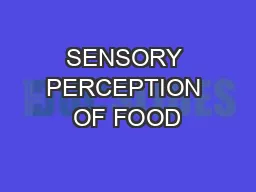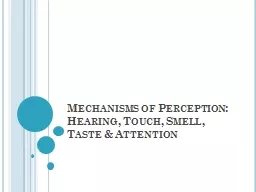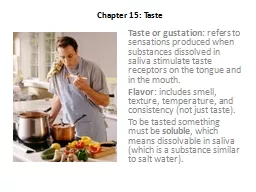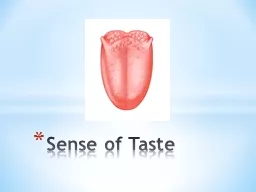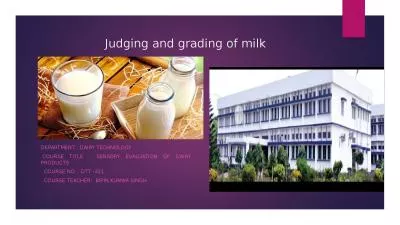PPT-Elements of Taste & Flavor
Author : jones | Published Date : 2023-06-26
Chef Jennifer M Denlinger PhD CCC CHEP Definitions Taste refers to 5 basic tastes salt bitter sweet sour umami There are also several other sensations we will look
Presentation Embed Code
Download Presentation
Download Presentation The PPT/PDF document "Elements of Taste & Flavor" is the property of its rightful owner. Permission is granted to download and print the materials on this website for personal, non-commercial use only, and to display it on your personal computer provided you do not modify the materials and that you retain all copyright notices contained in the materials. By downloading content from our website, you accept the terms of this agreement.
Elements of Taste & Flavor: Transcript
Download Rules Of Document
"Elements of Taste & Flavor"The content belongs to its owner. You may download and print it for personal use, without modification, and keep all copyright notices. By downloading, you agree to these terms.
Related Documents






